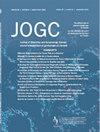External Cephalic Version: A Retrospective Chart Review at a Canadian Tertiary Care Centre
IF 2
Q2 OBSTETRICS & GYNECOLOGY
引用次数: 0
Abstract
Objectives
The primary objective is to identify our local external cephalic version (ECV) success rate, variables associated with increased likelihood of success, and complication rates. The secondary objective is to allow obstetrical care providers to accurately counsel patients undergoing a trial of ECV.
Methods
We analysed patient charts between January 2018 and December 2022 who underwent ECV. Variables included maternal age, parity, gestational age at the time of ECV attempt, breech type, anesthetic, uterine relaxant, placental location, neonatal birthweight, and provider seniority. Outcomes were ECV success, mode of delivery, emergent cesarean delivery rate due to ECV, and neonatal intensive care unit admission. Appropriate statistical analysis was performed.
Results
Overall, 258 patients were included. Overall success rate was 31%. Multiparity, transverse presentation, and neonatal birthweight >3.3 kg were associated with significantly increased success rates. Uterine relaxant use was associated with a lower success rate than no relaxant use, which is potentially explained by significantly more frequent relaxant use in non-transverse presentations and a non-significant trend in increased relaxant use in primiparous patients. Other factors including anesthetic use, maternal age, gestational age, placental location, and provider seniority did not significantly impact success. The emergency cesarean delivery rate was 10% and the neonatal intensive care unit admission rate was 8%, both of which were higher than anticipated.
Conclusions
ECV remains an option for the management of the term breech. Obstetrical providers at our centre and in others may use this study to more accurately counsel patients using local data and optimize the likelihood of success based on patient and peri-procedural factors.
头外翻:加拿大一家三级医疗中心的回顾性病历审查。
目的:主要目的是确定我们当地的头外侧位术(ECV)成功率、与成功可能性增加相关的变量以及并发症发生率。次要目标是让产科护理人员能够准确地为接受 ECV 试验的患者提供咨询。方法:我们分析了 2018 年 1 月至 2022 年 12 月期间接受 ECV 的患者病历。变量包括产妇年龄、奇偶数、尝试 ECV 时的胎龄、臀位类型、麻醉剂、子宫松弛剂、胎盘位置、新生儿出生体重和提供者资历。结果包括ECV成功率、分娩方式、ECV导致的紧急剖宫产率和新生儿重症监护室入院率。结果:共纳入 258 例患者。总体成功率为 31%。多胎妊娠、横位分娩和新生儿出生体重大于 3.3 千克与成功率显著增加有关。与不使用子宫松弛剂相比,使用子宫松弛剂的成功率较低,原因可能是非横位胎儿使用子宫松弛剂的频率明显较高,而初产妇使用子宫松弛剂的增加趋势并不明显。其他因素包括麻醉剂的使用、产妇年龄、孕龄、胎盘位置和医护人员的资历对成功率没有显著影响。紧急剖宫产率为 10%,新生儿重症监护室入院率为 8%,均高于预期。本中心和其他中心的产科医疗人员可以利用这项研究,使用本地数据为患者提供更准确的建议,并根据患者和围手术期因素优化成功的可能性。目的:主要目的是确定本地头臀外侧位(ECV)的成功率、与高成功可能性相关的变量以及并发症发生率。次要目标是为产科护理人员提供所需的工具,以便为接受 ECV 试验的患者提供支持。方法:我们分析了 2018 年 1 月至 2022 年 12 月期间接受 ECV 的患者记录。分析的变量包括产妇年龄、奇偶数、尝试 ECV 时的胎龄、臀先露类型、麻醉、子宫松弛剂、胎盘定位、出生体重和提供者的工作年限。标准为顺产成功率、分娩方式、因顺产导致的紧急剖宫产率和新生儿重症监护入院率。进行了良好的统计分析。结果:共纳入 258 名患者。总体成功率为 31%。多胎妊娠、横位分娩和出生体重大于 3.3 千克与较高的成功率有关。与不使用子宫松弛剂相比,使用子宫松弛剂的成功率较低,原因可能是非横位产妇使用子宫松弛剂的频率明显较高,而初产妇增加使用子宫松弛剂的趋势并不明显。其他因素,如麻醉剂的使用、产妇年龄、胎龄、胎盘位置和医护人员的年资,对手术的成功率没有显著影响。紧急剖腹产率为 10%,新生儿重症监护入院率为 8%,均高于预期。我们中心和其他中心的产科护理人员可以利用这项研究,通过本地数据为患者提供适当的支持,并根据患者因素和术前、术中和术后的时间优化成功的几率。
本文章由计算机程序翻译,如有差异,请以英文原文为准。
求助全文
约1分钟内获得全文
求助全文
来源期刊

Journal of obstetrics and gynaecology Canada
OBSTETRICS & GYNECOLOGY-
CiteScore
3.30
自引率
5.60%
发文量
302
审稿时长
32 days
期刊介绍:
Journal of Obstetrics and Gynaecology Canada (JOGC) is Canada"s peer-reviewed journal of obstetrics, gynaecology, and women"s health. Each monthly issue contains original research articles, reviews, case reports, commentaries, and editorials on all aspects of reproductive health. JOGC is the original publication source of evidence-based clinical guidelines, committee opinions, and policy statements that derive from standing or ad hoc committees of the Society of Obstetricians and Gynaecologists of Canada. JOGC is included in the National Library of Medicine"s MEDLINE database, and abstracts from JOGC are accessible on PubMed.
 求助内容:
求助内容: 应助结果提醒方式:
应助结果提醒方式:


